Design Records was a division of Pickwick Sales of New York, later Pickwick International. The first
albums under the Design imprint came out in 1957. Originally, the label packaging was done in accord
with industry norms, with decent vinyl, reasonably good jackets with full color covers, titles on the spine,
and liner notes on the back. Within just a few years, this had deteriorated to noisy vinyl with lots of
bumps and lumps, jackets made of two pieces of cardboard held together by the generic paper jacket
back, and a front slick. In other words, "budget" (i.e., "cheap") all the way.
Like many of the other budget labels, Design leaned heavily toward performances they owned, songs in
the public domain, and songs written cheaply by their in-house staff. They had few artists who were not
either studio musicians or groups, or artists seriously past their prime. Pickwick was the owner of most of
Eli Oberstein's masters from his labels like Royale, who had very old masters by artists who had been
popular in the 1930s and 1940s. They made use of these along with generic orchestral arrangements.
They even found a few sides to lease by those who were currently hit makers. Sides, that is, that the
unsuspecting public soon found were early recordings before the stars had hit their stride or developed
their hit style. Interestingly, one of the Pickwick staff writers was Lou Reed, who later formed the Velvet
Underground and went on to solo stardom in the 1970s. Reed appeared as a singer and guitarist as well
as a songwriter on several of the mid-1960s Design compilations.

|
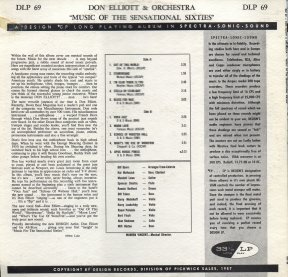
|
Early Design albums, starting in 1957, were in the Design DLP series, obviously in mono only (stereo
was not a reality on vinyl until 1958). The first label was black with a thin white stripe across the label
through the center hole. Above the white line was the multicolored logo, with "DESIGN RECORDS" and
beneath that, in blue lettering with yellow initial letters, "Spectra Sonic Sound". Beneath the white line
was the record number, title, artist, and song list, all in silver print. Around the bottom of the label in
yellow print was "HI-FIDELITY NON-BREAKABLE PICKWICK SALES CORP., LONG ISLAND CITY 1,
N.Y. 33 1/3 RPM LONG PLAYING RECORD". The record jacket back, for the first few years, used a
similar format. The record number, title, and artist were in capital letters at the top of the jacket back.
Under the title was a black bar running horizontally across the album, with the following in white print
inside the bar: "A DESIGN *CP LONG PLAYING ALBUM IN SPECTRA-SONIC-SOUND" Beneath the
bar to the left were liner notes and a song list, and on some issues a short list of other Design albums. At
the right was a vertical grey box running from the top black bar to the bottom of the album. This box had
propaganda about Spectra-Sonic-Sound. Just above another horizontal black bar at the bottom of the
jacket was an oval logo with "33 1/3 LP LONG PLAY" across a black and white field. The bar at the
bottom said, "COPYRIGHT BY DESIGN RECORDS, DIVISION OF PICKWICK SALES, 1957" This
legend on the bottom bar was used considerably longer than 1957. It was known to be used into 1959,
at least, so the copyright date does not indicate the date of release of the individual record, necessarily.
|

|

|
Oddly enough, some labels of the first mono design were printed with "STEREO SONIC SOUND"
instead of "SPECTRA SONIC SOUND." Later, in the early 1960s, Design lowered the cost of printing
labels by going to a black-and-white version.
|

|

|
When stereo was introduced, Design tried a ploy by stating that their records were compatible
mono/stereo, and could be played on either mono or stereo players. The public soon found out that
mono players would damage these records just as easily as other stereo records, so after reissuing or
simultaneously issuing about 50 of their albums on a new series (the DCF-1000 Series), they
abandoned the compatible stereo series in favor of the normal mono and stereo issues. For the first
thirty or so albums in the DCF series, the labels were black with silver print, and the same legend in
yellow around the bottom of the label as was found on the mono label. The usual Design logo was not
present, replaced by a circular blue, black, and yellow "Design Compatible Fidelity" logo. Around the top
half of the label edge was 'DESIGN COMPATIBLE FIDELITY" in orange block letters, while around the
bottom half in yellow block letters was "PLAYS STEREO OR MONOPHONIC". Later in the series, this
label was replaced with a similar label with a white field in the middle with black print.
|
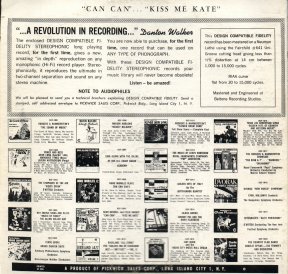
|
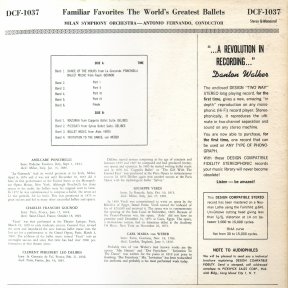
|
The backs of the first twenty or so issues in the DCF-1000 series were identical with the exception of the
title, artists, and record numbers at the top of the jacket back. They featured some words by one Danton
Walker about the greatness of compatible stereo, along with a box with some technical information.
Below this was a listing, with small photos, of the first 20 albums in the DCF series. The black bar
running across the bottom of the jacket back discarded the "1957" wording and replaced it by, "A
PRODUCT OF PICKWICK SALES CORP., LONG ISLAND CITY 1, N.Y." Later in the DCF series, the
jacket back changed somewhat, with the small albums gone and the "Revolution in Recording" screed
by Danton Walker moved into a vertical box to the right. Gone was the black bar at the bottom of the
jacket, but the wording was still there; it was changed to "COPYRIGHT BY PICKWICK
INTERNATIONAL, INC. LONG ISLAND CITY 1, N.Y.
|

|

|
In addition to the Compatible Stereo DCF Series, Design began issuing stereo counterparts to the mono
Design records on a new label, Stereo Spectrum. These records had a gold label with black print, and
boasted "In AuthentiPhonic Stereo Process." This was probably a good way to say the records were
rechanneled instead of in real stereo, as most of the contents were. The Stereo Spectrum series started
in the SS- series, with counterparts to the mono DLP- series having no numerical correlation. Sometime
after SS-71 was issued, The series was combined with the DLP- series, and the Stereo Spectrum
albums were issued with an SDLP- prefix corresponding to the DLP- mono number. From the low DLP-
100 numbers to the low DLP-200 numbers, the Stereo counterparts had a "Stereo Spectrum" banner
across the top.
|
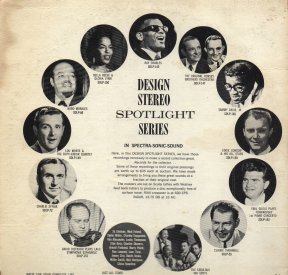
|
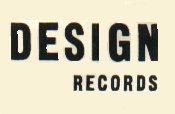
|
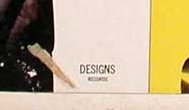
By 1962, Design switched to a generic jacket back highlighting the "Design Spotlight Series." The old
Design multicolor logo was no longer used on the front cover, although it was used on the mono labels.
Instead, there was no logo on the front of the jacket from the late DLP-140s to approximately the DLP-
210s, just the label name in small block letters. Well, almost all of the records had the label name; one at
least had the label name misspelled.
|
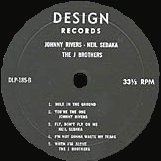
|

|
For some issues in the mid-1960s, Design also used a very plain black label for mono issues and a blue
counterpart for stereo issues.
|
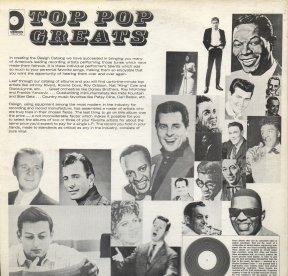
|

|
Late in 1965, Design switched to a new generic jacket back featuring a photo collage of "TOP POP
GREATS" and changed the logo design to a part of a record album in a rectangle, suggestive of the
album being removed from the jacket. Reissues of earlier catalog numbers from this point had a
reworking of the logo on the front slick to match the updated logo design. Reissues also had the red
labels shown below.
|
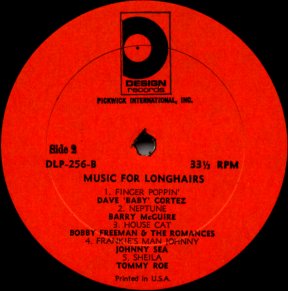
|
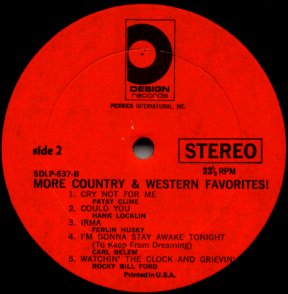
|
Concurrent with the switch to the new logo was a complete redesign of the label. The Stereo Spectrum
label was dropped altogether and both mono and stereo issues of the albums used basically the same
red label with black print. These labels were used for Design issues until the label folded in the early
1970s.
|



















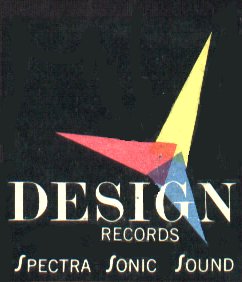 Design Album Discography
Design Album Discography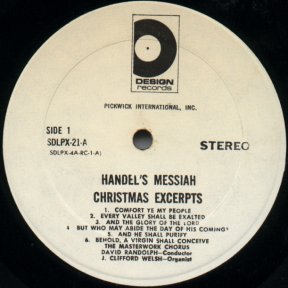 On to the Design Discography, Part 8 Christmas Issues
On to the Design Discography, Part 8 Christmas Issues
 Back to the Pickwick Story
Back to the Pickwick Story  Back to the Discography Listings Page
Back to the Discography Listings Page